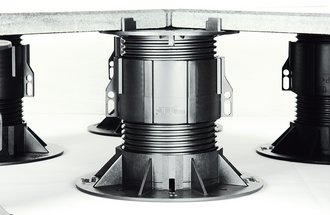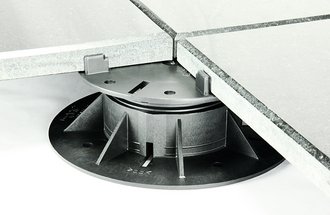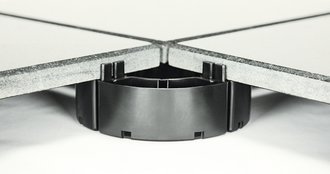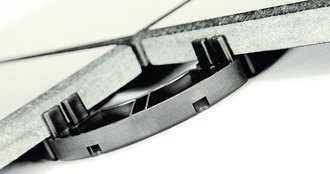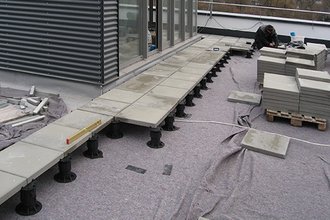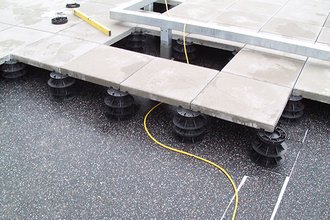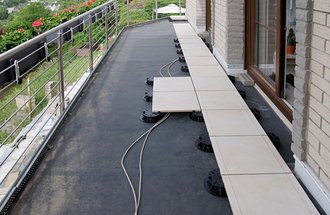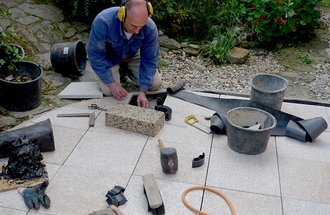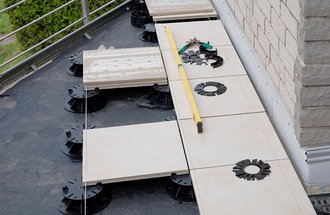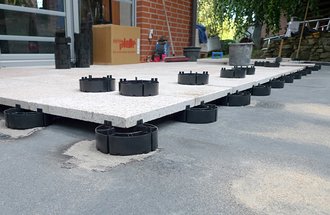Paving Installation
A firm subsurface with a 1 to 5 % gradient is required to be able to loose-lay natural stone, artificial stone, ceramic slabs or even timber on decking supports.
The high slab edges should preferably be laid in the direction of the drainage channels, although border slabs are adjusted to match the way the border runs. The first row is lined up with the aidof a long spirit level, a plumb line or a laser plummet. The remaining slabs should then be laid starting from a corner slab in this initial row.
Rigid pedestals (PP range) are halved for installation along borders and quartered for corner use. Individual spacers can be removed from the height-adjustable pedestals (PLV50/75) as requiredand the slab supports can be positioned entirely beneath the slabs. The paving is secured in place along the entire length of its border to prevent lateral shift.
The pedestals are each positioned beneath the cross-joint where four slabs meet, so that eachcorner of a slab rests on one of the four pedestals that make up a slab support. Using shimwashers (AS range), which can be halved or quartered, specific support points or all four supportcorners can be individually height-adjusted. This compensates for the gradient of the subsurfaceand any unevenness in the individual slabs. These are slotted onto the spacers, in line with their shape, to prevent them from shifting.

 +49 (0) 721 572900
+49 (0) 721 572900